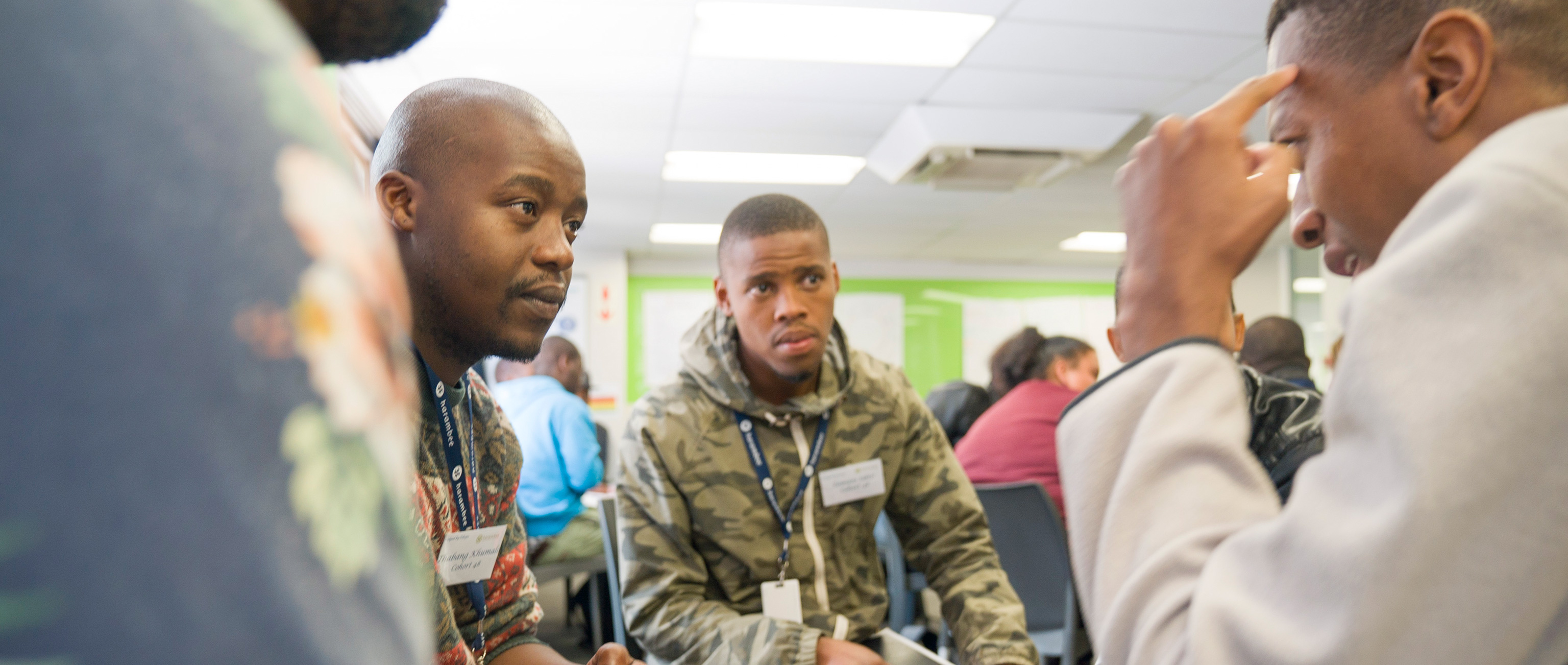Skoll World Forum 2019: Accelerating Possibility

Imagine the impact if the untapped, underfunded, and underappreciated talent and tenacity of leaders from developing countries was fully utilized. At the 2019 Skoll World Forum, my co-facilitators and I posed this question to a diverse group of social impact leaders and their investors during the workshop Fighting for Fairness: Investing in Local Solutions.
It was a timely event, as the Forum has been a space for addressing inequality in the philanthropy space for a few years. Co-facilitating this conversation was important to me because I have been eager to find ways to bring a diverse group of people together for a deeper dialogue, beyond conversation and critique. My co-facilitators Solomon Benge of FundiBots and Andy Bryant of the Segal Foundation and I hoped that our session, if executed well, could create a safe space where funders and social entrepreneurs like myself and Solomon could discuss equitable solutions stemming from diverse experiences.
Imbalances exist in the power dynamics between funders and local leaders on the ground. But often discussions about equity and diversity only focus on visible power dynamics like racial and gender representation. Multiple dimensions of power shape imbalances in philanthropy. Visible, hidden, and invisible power dynamics must be addressed to find equitable solutions. These were reflected in our questions reflected these dynamics.
The dialogue in the room was spirited, honest, and profound. Engaged conversation ensued at round tables between funders and nonprofit leaders alike. Our prompts were designed to foster the kind of engaged exchange that can be rare.
And they listened to each other. We challenged the group to reflect on the power dynamics in their own relationships. We managed to make people think about how we can truly accelerate possibility through shared decision-making power.
Through this dialogue, we tried to understand the visible power dynamics that exist in decision-making—in setting criteria, structures, and procedures that inform funding decisions. We learned that involving local partners at each step of the process improves results in the long-term.
When we moved to discussion on hidden power dynamics such as setting the rules on how and when to communicate, we learned that existing power dynamics unintentionally neglect the voices of local leaders. Local partners are incredible sources of knowledge and expertise, not only in executing their work but in understanding what their communities need. Why not involve them in the decision-making process about what areas need funding in their communities?
One fascinating response echoed repeatedly: the funder “obsession” with scale. We heard that this often pressures leaders to focus on scaling instead of delivering the highest impact on the communities they serve, to the detriment of the beneficiaries and the organization in the long term.
Lastly, we reflected on invisible power and the internalized stereotypes that shape ideologies about the capabilities of leaders from developing countries. Many local leaders in the room spoke of experiencing a lack of confidence in their partnerships. They cited mistrust and a lack of empathy as the biggest barriers. We learned that this issue is reinforced with restricted funding that doesn’t allow early stage organizations to shift gears, and pivot to find optimal solutions. This requires open channels of communication and feedback mechanisms to build mutual trust and a feeling of truly equal partnership.
I have seen first-hand the power of creating partnerships with the people who are being served through my work with Seeds of Africa. A program designed towards high impact locally-led solutions, we believe that the communities we serve are our partners. We trust their expertise in knowing how to solve the problems they face every day, and we support them with resources to actualize their solutions.
In the spirit of creating high impact solutions, what steps can be implemented that facilitate more equitable relationships between funders and local leaders? Here are some of the suggestions that arose from this deeply engaging workshop session:
Increase representation in the grantmaking process: Empower your past grantees by including them in your decision-making processes based on their expertise of local contexts.
Set context-specific criteria: Trust your local partners and allow them to demonstrate the high impact they are capable of when they are given agency and full confidence.
Request Feedback: Open the lines of communication and encourage regular feedback through anonymous surveys.
Redefine your definition of high impact: Impact cannot always be quantified. Get to know your beneficiaries on the ground and what impact means to them.
Break the culture of silence: Give and request feedback from your funding partners. Openness, honesty, and engaged listening is a major step towards fostering understanding.
Bridge information gaps: Frustrations arise from lack of understanding of local contexts. Invite your partners to experience your work from your perspective by bridging all information gaps.
At its core, philanthropy is about empowering people through social impact. Insisting on equity in social impact partnerships is key—it inevitably leads to greater impact and development in the communities served—a mutual benefit for all.
Notifications